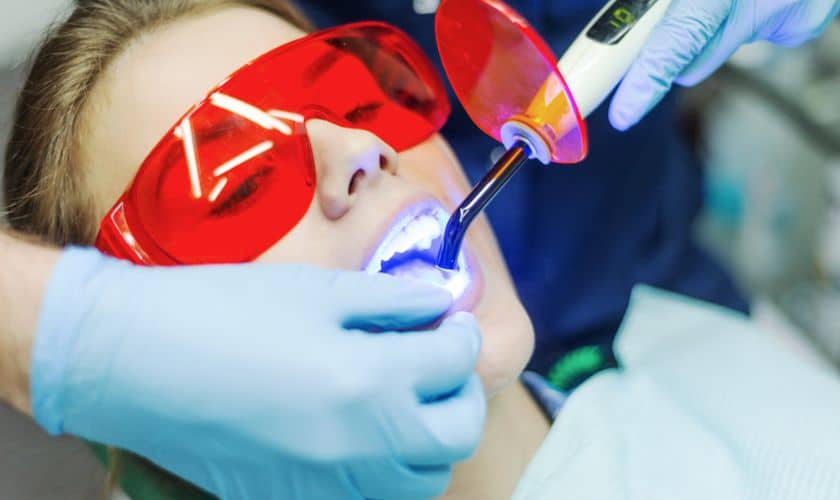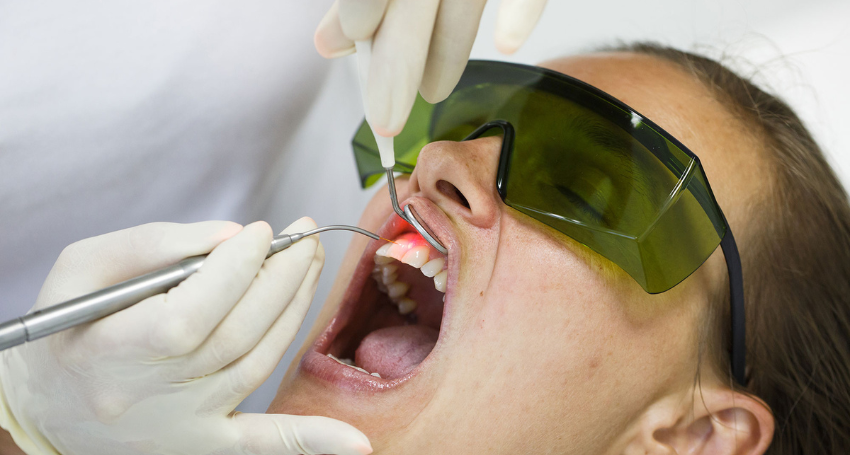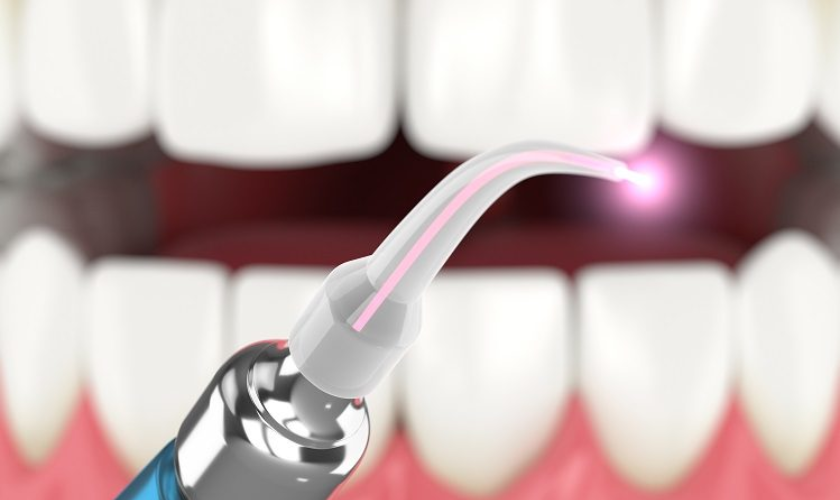
Advancements in dental technology have introduced a significant choice for patients: laser dentistry or traditional methods. This decision can impact the effectiveness, comfort, and overall experience of dental procedures. Laser dentistry offers precise and minimally invasive treatments, while traditional methods have a longstanding track record. Understanding the nuances, benefits, and limitations of each approach is crucial in making an informed decision that aligns with your oral health needs and personal preferences. In this guide, we’ll delve into the key differences between laser dentistry and traditional dentistry, helping you determine which option is the best fit for your unique dental care journey.
Understanding Laser Dentistry
Laser dentistry involves the use of focused light beams to perform various dental procedures with precision and minimal discomfort. The laser energy can target specific areas, removing or reshaping tissue while sealing blood vessels and nerve endings. This technology reduces the need for traditional tools like drills and scalpels, often resulting in shorter treatment times, less bleeding, and faster recovery. Laser dentistry is employed for diverse procedures, including cavity detection, gum disease treatment, teeth whitening, and even oral surgeries. Its non-invasive nature and potential for improved patient comfort make it an appealing option for those seeking efficient and advanced dental care.
Upsides of Laser Dentistry
Laser dentistry offers several compelling advantages over traditional methods:
1. Precision and Minimally Invasive Procedures:
Laser technology allows for incredibly precise tissue targeting, minimizing damage to surrounding areas. This precision enables dentists to perform delicate procedures with minimal impact on healthy tissues, resulting in faster healing times and reduced postoperative discomfort.
2. Reduced Discomfort and Pain:
Laser dentistry often eliminates the need for drills and anaesthesia, reducing discomfort and anxiety for patients. The non-invasive nature of lasers means there’s often less pain during and after the procedure, leading to a more comfortable experience overall.
3. Faster Healing and Reduced Risk of Infection:
Laser energy can simultaneously seal blood vessels and nerve endings as it cuts, reducing bleeding and the risk of infection. The concentrated light also stimulates cellular regeneration, promoting faster healing of treated tissues.
4. Minimized Need for Anesthesia:
Many laser procedures are less painful than traditional methods, reducing the need for local anesthesia. This is particularly beneficial for patients who have dental anxiety or are sensitive to numbing agents.
These advantages collectively make laser dentistry an appealing option for patients seeking efficient, comfortable, and advanced dental treatments.
Exploring Traditional Dentistry
Traditional dentistry refers to the conventional methods and tools that have been used for decades to diagnose, treat, and prevent oral health issues. It encompasses a wide range of procedures and techniques that dentists have relied upon for their reliability and effectiveness. Some key aspects of traditional dentistry include:
1. Proven Track Record: Traditional dentistry has a long history of successfully addressing various dental problems. Dentists are well-versed in these methods and have extensive experience in performing procedures using traditional tools and techniques.
2. Familiarity: Many patients are accustomed to traditional dental procedures, such as dental cleanings, cavity fillings, and extractions. These methods have been the foundation of dental care for generations and are still widely used today.
3. Comprehensive Care: Traditional dentistry provides comprehensive care for a wide range of oral health issues, including routine check-ups, cleanings, restorative treatments, and emergency care.
4. Accessibility: Traditional dentistry is readily available and offered by most dental practices. Dentists are equipped with the necessary tools and instruments to perform various procedures effectively.
However, it’s important to note that while traditional dentistry is tried and true, it may have some limitations compared to newer technologies like laser dentistry. It’s essential to weigh the benefits and drawbacks of both approaches when considering your dental care options. Your dentist can guide you in determining which method aligns best with your oral health needs and preferences.
Key Difference Between Laser and Traditional Dentistry
The differences between laser dentistry and traditional dentistry encompass various aspects that impact treatment approaches and patient experiences:
1. Treatment Precision and Minimally Invasive Techniques:
Laser dentistry utilizes highly focused light beams to precisely target and treat specific areas, minimizing damage to surrounding tissues. This results in less bleeding, reduced discomfort, and faster healing times. In contrast, traditional dentistry may involve more invasive techniques, such as using drills and scalpels, which can lead to greater tissue trauma and longer recovery periods.
2. Anesthesia and Pain Management:
Laser dentistry often reduces the need for local anaesthesia due to its minimally invasive nature and reduced discomfort. Patients undergoing laser procedures may experience less pain during and after treatment. Traditional dentistry may require more anaesthesia, especially for procedures involving drilling or surgical techniques.
3. Healing and Recovery Time:
Laser dentistry’s precision and gentle approach contribute to quicker healing and recovery. Patients often experience less postoperative discomfort and a reduced risk of infection. Traditional dentistry procedures, which may involve more tissue manipulation, could result in longer healing periods and potential discomfort.
Understanding these key differences is essential when deciding between laser and traditional dentistry. While both methods have their advantages, your specific oral health needs, preferences, and the nature of the procedure will play a crucial role in determining which approach is the most suitable for you. Consulting with your dentist will help you make an informed choice tailored to your individual circumstances.
Laser Dentistry Application
Laser dentistry finds application in a variety of dental procedures, harnessing its precision and minimally invasive qualities for improved patient experiences:
1. Gum Disease Treatment:
Lasers are often used for non-surgical gum disease treatment, known as scaling and root planing. The laser removes bacteria and infected tissue while promoting healthy gum reattachment to the teeth. This approach can result in reduced bleeding, discomfort, and a faster recovery compared to traditional methods.
2. Cavity Detection and Removal:
Lasers can aid in early cavity detection by revealing areas of enamel demineralization. They can also be used to remove decayed tissue during cavity preparation, offering a more precise and comfortable alternative to traditional drilling. The targeted nature of lasers helps preserve healthy tooth structure.
These applications showcase how laser dentistry can enhance specific procedures, providing patients with less invasive, more comfortable, and efficient dental care. However, the suitability of laser dentistry for a particular treatment will depend on factors such as the dentist’s expertise and the patient’s individual needs.
Traditional Dentistry Application
Traditional dentistry encompasses a wide range of applications that have been integral to oral health care for generations:
1. Cavity Fillings:
Traditional dentistry employs materials like dental amalgam or composite resin to fill cavities caused by tooth decay. Dentists use specialized instruments to remove decayed tissue, clean the area, and then fill it to restore the tooth’s function and appearance.
2. Extractions and Oral Surgeries:
Traditional methods are used for tooth extractions, such as wisdom teeth removal, as well as various oral surgeries. Dentists may use surgical tools like forceps and scalpels to safely remove teeth or address more complex oral health issues.
These applications demonstrate the versatility of traditional dentistry in addressing a wide range of dental problems, ensuring patients receive comprehensive care for their oral health needs. While newer technologies like laser dentistry offer advantages, traditional methods continue to play a significant role in dental treatment. Your dentist will determine the most appropriate approach based on your specific condition and requirements.
Factors to Consider while Choosing
When deciding between laser dentistry and traditional dentistry, several factors come into play to ensure you make an informed choice that aligns with your oral health needs and preferences:
1. Nature of the Procedure:
Consider the specific dental procedure you require. Laser dentistry may be more suitable for certain treatments, such as gum disease therapy and cavity removal, due to its precision and minimally invasive nature. Traditional dentistry, on the other hand, might be preferred for more complex procedures like oral surgeries or extractions.
2. Comfort and Anxiety Level:
Evaluate your comfort level and any dental anxiety you may have. Laser dentistry often offers reduced discomfort and requires less or no anaesthesia, which can be appealing if you’re anxious about dental procedures. Traditional dentistry may still involve some discomfort and the use of anesthesia.
3. Dentist’s Expertise and Equipment Availability:
Confirm if your dentist is trained and experienced in laser dentistry techniques. The availability of laser equipment and your dentist’s proficiency in using it are essential considerations. Some dental practices may have limited access to laser technology, impacting your choice.
By carefully assessing these factors, you can make an informed decision that suits your individual circumstances. Your dentist will play a crucial role in guiding you toward the most suitable treatment approach based on your oral health needs, the procedure’s complexity, and your personal preferences.
Choosing between laser dentistry and traditional dentistry requires a thoughtful evaluation of factors like procedure type, comfort level, and dentist expertise. While laser dentistry offers precision and reduced discomfort, traditional methods have a proven track record. Consulting your dentist ensures the optimal choice for effective, comfortable, and personalized dental care.


